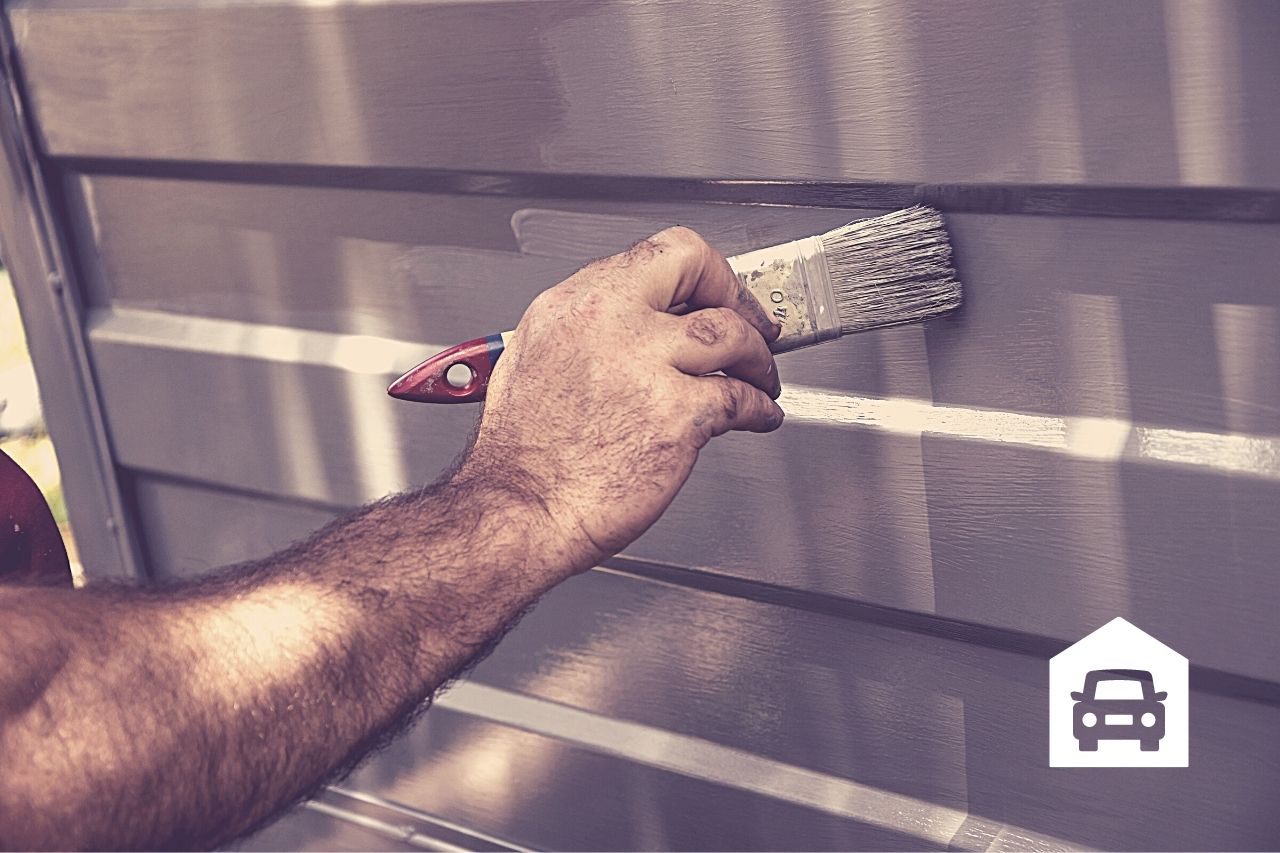If your garage door is old, chipped and damaged, the right fix is to replace it, but what if you can’t afford to do that right now? A good repainting job can buy you some time. With this kind of fix, you don’t necessarily want to strip the door completely or do the very best paint job possible. In fact, stripping the door might even damage it more. In this article, we provide smart tips to help you repaint an old, chipped, damaged garage door successfully. Read on to learn more (including two videos below).
What You'll Learn Today
- 10 Steps To Repainting Your Old Garage Door
- Do it when the weather is cooperative
- Get the right kind of paint and primer
- Get organized
- Make sure the door is clean
- Knock away the worst of it
- Protect the things you don’t want to paint
- Be sure that you’ll be able to move the door manually while you are working
- Now you are ready for your primer or first coat of paint
- Allow ample drying time between coats
- Apply your second coat
10 Steps To Repainting Your Old Garage Door

Do it when the weather is cooperative
As with any outdoor painting project, you’ll get your best results when the temperature and humidity are at comfortable levels. Look for a couple of days when predicted temperatures range between 50-75 degrees Fahrenheit.
Humidity levels should be low. Plan to paint during the time of day when the sun is not blazing right on the garage door.
Get the right kind of paint and primer
This will vary somewhat depending upon whether your garage door is vinyl, aluminum or wood. For the most part, a good quality exterior acrylic latex paint should work, but if you have concerns, talk with the experts at your local paint store.
Get organized
Have all your materials ready to go before you start. You’ll need:
- A gallon of the paint you have chosen
- A ladder and/or a stepstool
- A gallon of primer
- A pressure washer
- Painters’ tape
- A paint roller
- A paint brush
- A paint tray
- Drop cloths
Note that a gallon of paint should be plenty to paint a garage door; however, if you are attempting to cover a light color with a dark color, you may need more. Likewise, if you are using a paint and primer combo, you may need more than if you were using primer and paint separately.
Restoring Old Garage Doors – Part One
Make sure the door is clean
Power wash the door to clean off dirt and grime. Follow up by washing it down with an all-purpose cleaner and a sponge or clean cloth. Rinse the door with your garden hose, or give it another blast with the power washer and let it dry.
This may take three or four hours. If you can allow the drying to take place in the hottest part of the day while the sun is shining on the door, it will speed things up.
Knock away the worst of it
If your door is rusted, has big chips in it, has cracked panels, etc., do what you need to do to knock off the worst and mend as well as you can. This will vary depending upon the material you are dealing with.
Protect the things you don’t want to paint
Move your cars out of the way. Put down drop cloths under the door. Mask off the weather seal at the bottom of the door, trim around the door and hardware.
Be sure that you’ll be able to move the door manually while you are working
If it is an electric door, disengage the power opening mechanism so that you can operate the door manually. This will make it easier for you to paint the lower panels without having to stoop.
Now you are ready for your primer or first coat of paint
Use the large roller to paint the larger, flat surfaces. Wipe off any drips and then use the smaller roller and/or the paint brush to get recessed surfaces.
Allow ample drying time between coats
Follow recommendations on the primer and paint cans regarding drying time. Generally speaking, 12 hours is recommended, but this may vary depending on the product you purchase.
Apply your second coat
Follow the same steps you used to apply the first coat. Carefully remove the painters’ tape and any masking materials you may have used. Allow 12 hours (or the time recommended by the paint manufacturer) for the final coat to dry completely.
Is it ok to use a different type of paint for the second time? Or repainting with the same type is better?